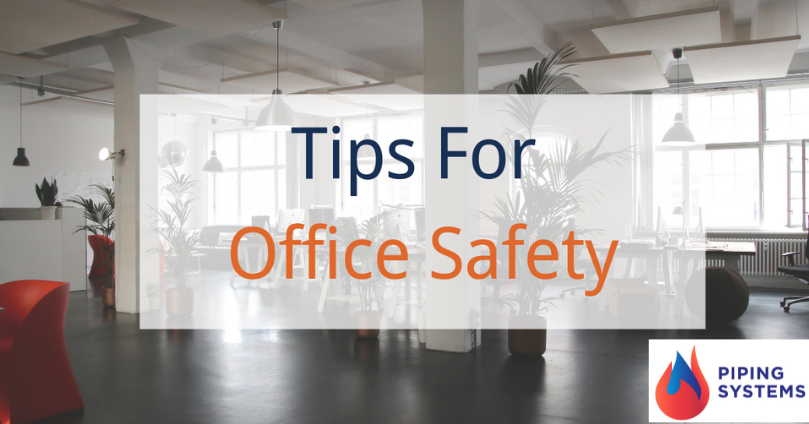Safety is always essential in an office, just as it is in any workplace. It is fairly easy and straightforward to control office safety in a professional office building, but it can be more challenging in a workplace where the office staff may be out on the workroom floor, in the warehouse or walking around production, fabrication and manufacturing equipment.
The challenge is in training the office staff to know the basics of staying safe on the workroom floor. Of course, there are also basic office safety tips to keep in mind. To develop a safe and complete working environment for the staff, let’s take a closer look at the two different environments and some effective practices for safe workplaces.
In the Office
In most offices, common sense is critical in preventing injuries.
It is important for management to provide clear information on those common issues and not to assume that everyone has the same level of understanding of the risks involved in common practices that may be very unsafe.
- Clean work space – keeping your work space area clean and free from items stored on the floor, around the desk or chair, or even hanging on walls and doors can prevent tripping, falling and other types of accidents.
- Floor areas – any spills, moisture, or other types of messes should be immediately cleaned up to prevent slip and fall injuries. If there is damage to the floor area, it should be immediately reported and signage provided to prevent further accidents.
- Furniture – ensure all furniture is in good repair and report any damage. Large items like filing cabinets should be attached to the walls to prevent falling forward when drawers are opened. Chairs should be maintained in good condition, and any damaged furniture should be immediately repaired or removed.
- Repairs and maintenance – all maintenance and repairs of office equipment and furniture should be completed by the maintenance department and not by staff. Staff should also not be standing on chairs or ladders to replace light bulbs, to hang pictures or to do any other types of odd jobs around the office. Electric equipment and devices should also be installed, maintained and repaired by the maintenance team or an outside electrical repair service.
On the Workroom Floor
It is not uncommon for office staff to have to go out to the workroom floor or the manufacturing and production area. They should be involved in regular safety meetings that explain the guidelines and requirements for all staff, including those in the warehouse or the production area. These types of safety strategies include:
- Wearing safety gear – hard hats and steel-toed shoes are required in production areas according to OSHA standards. Be sure the office staff understands these types of requirements and follows these rules.
- Trip and fall prevention – in warehouses and production areas, be sure to train office staff of the signage used to induct a tripping hazard or potential issues with wet floors during production.
- Equipment – any dangerous equipment with moving parts or electric shock considerations should be clearly indicated. Signs as well a black and white or black and yellow strips on the floor in these areas provide clear indicators of danger zones.
- Forklift safety – review forklift safety rules with both equipment operators and office and warehouse staff on a regular basis. This includes the forklift pedestrian right of way required by OSHA, as well as the need for the pedestrians to always verify the forklift is stopping before proceeding into the path of the equipment.
Regular review of all safety practices across the workplace is the best way to keep everyone safe on the job.
